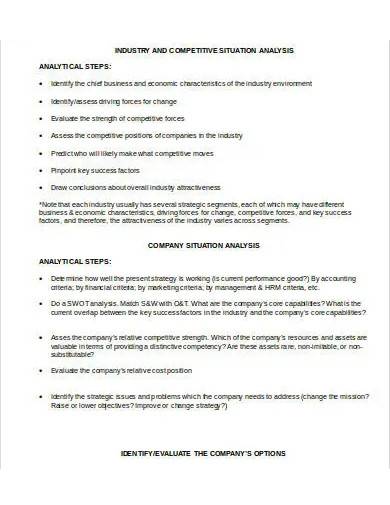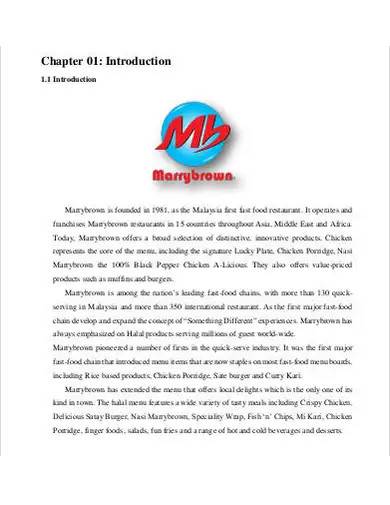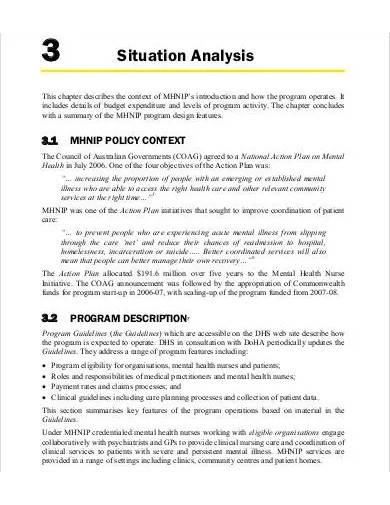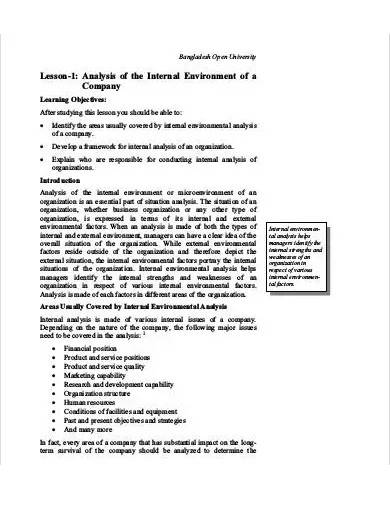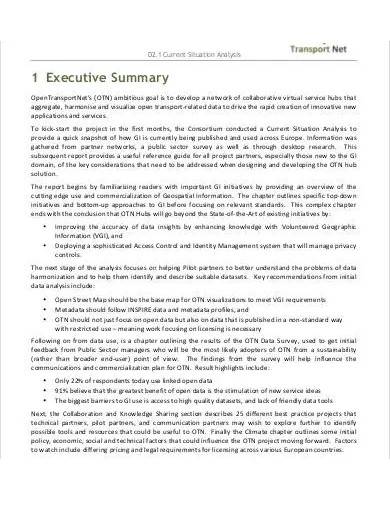As businesses experiment with their creative practices, there is no denying the challenges surrounding their competitors’ growth. Strengths and weaknesses that affect the implementation of various marketing strategies must be assessed to keep the company’s standing in the market healthy. But how can this be done? Luckily, this article covers the appropriate steps, along with a wide array of downloadable situation analysis templates that are all useful in identifying the internal and external factors affecting your business status. Let’s get it on.
1. Situation Analysis Template

2. Marketing Situation Analysis Template

3. Current Situation Analysis Template
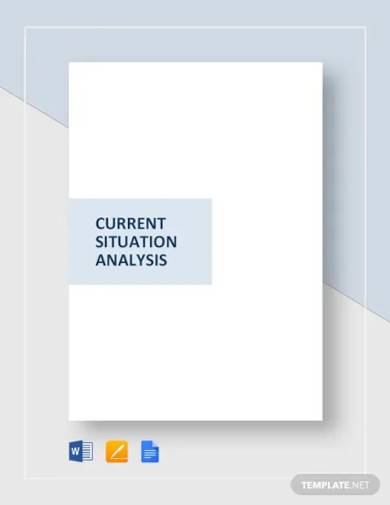
4. Industry Situation Analysis Template
5. Sample Dreaded Situation Analysis
6. Regional Situation Analysis
7. Sample Advertising Situation Analysis
8. Health Situation Analysis Template
9. Marketing Plan Situation Analysis
11. Company Situation Analysis Template
11. Sample Current Situation Analysis
What Is a Situation Analysis?
In the long-run, you need to focus on exactly where you want to drive your business. Think of it as a review where situation analysis defines the operational environment’s internal and external factors. This analysis is a marketing tool that recognizes customers’ engagement and the capabilities of an organization supplying it. This stage employs a marketing audit that gives an overview of what worked and what doesn’t. On the other hand, a SWOT analysis supports this method by looking into the various strengths, weaknesses, opportunities, and threats.
What Is a SWOT Analysis?
In business, analyzing goals and objectives lets management conduct research inside and outside the organization. It involves SWOT Analysis that targets four areas: Strengths, Weaknesses, Opportunities, and Threats. This process is vital to gain market awareness and additional strategies useful in coping up with competitors.
What Are the Internal and External Factors?
Remember the four areas of swot analysis? It is indeed a useful evaluation tool for the top management on assessing strategic plans and the current business level. With that said, what are the internal and external factors that indicate growth in respective markets? Inside the company, human resources exert an effort to follow marketing plans that apply to customers and target audiences. However, physical resources, financial resources, and operational processes impact how proper utilization transforms profitable results. These are the internal factors that influence strengths advancement that, if misemployed, turns into a weakness. What about outside the organization? With the presence of competition, external factors include economic trends, partnerships, and demographics. These are uncontrollable areas considering threats from competitors’ standing and open opportunities when awareness from research picks.
How to Develop a Situation Analysis
Developing a situation analysis is an advantage in examining problems enhancing tactics for marketing strategies. However, 5C analysis extends broader functions on competitive edge and market opportunities. As our recommended templates above fit conveniently in this model, here are the steps that work after you download:
1. Company Analysis
Primarily, goals and objectives are the focus of establishing a business. It allows you to think about what is the primary purpose of why your company existed. In this field, determining your market position is vital, where products need evaluation for development—details like brand identity, pricing, and distribution process.
2. Check Competitors
Making a competitors’ list allows you to compare your business. Breaking them down into level lets you build awareness accordingly. They are two types: Primary competitors run similar strategies, resources, products, and goals with your business. Meanwhile, secondary competitors are those companies consisting of potential threats. Both sides of competitors analyze your advantages and disadvantages in coping up with challenges.
3. Identify Customers and Collaborators
After having your competitors’ list, analyzing customers and prospect audiences gives significance to your offer’s products and services. Aside from engagement, a business always aims for customer satisfaction. Did you solve your customers’ problems? What are the solutions you implemented? Moreover, collaborators build a reliable partnership that helps your distribution process. Value them.
4. Analyze Climate
Finally, determining the internal and external factors that affect your business is crucial. Remember, what are those? Additionally, internal factors refer to the workforce in your business operations. More comprehensively, external factors are the natural phenomenon affecting economics. As a result, these factors will help you describe your market performance.
FAQ
What is a competitive situation?
A competitive situation is the standing of businesses’ competitors in the market. It includes a product range, quality, marketing strategies, resources, and similar intentions.
What makes a product successful?
A product is successful if it meets the needs of the customers. They have different preferences and tastes. Some standards are expected from a product. That is the quality that comes with a value. Meeting customers’ expectations can impact great satisfaction. The product will also be successful if the promotion works well and reaches the branch’s desired market.
How do you increase sales?
You increase sales by focusing on your customers and learning more about your competitors. Studying competitors’ techniques provides an idea of how they handle their business. Next is to build connections with your customers, value them, and empathize with them. Staying consistent with marketing and sales promotion strategies is an advantage too.
What are sales tactics?
Sales tactics are the way products or services are promoted by any means of action, such as social media advertising and website blogging. Tactics are formulated to increase sales and test new strategies if it is successful. Also, sales tactics can convert to more customer engagement.
Since market competition is always present in any industry, establishing a sustainable business will always remain a challenge. Now that you’ve read through this article, be assured that you are now better equipped to bring your business to the next level. Get a situation analysis template today and promote new strategies to reach your goals and objectives.
Related Posts
FREE 10+ Soar Analysis Samples in PDF
FREE 10+ Rhetorical Analysis Samples in PDF
FREE 10+ Analysis of Alternatives Samples in PDF
FREE 10+ Failure Mode and Effects Analysis Samples in PDF
FREE 10+ Make or Buy Analysis Samples in PDF
FREE 10+ Fishbone Root Cause Analysis Samples in PDF
FREE 11+ Cost Volume Profit Analysis Samples & Templates in PDF | MS Word
FREE 6+ Corporate Portfolio Analysis Samples in PDF
FREE 10+ Fault Tree Analysis Samples in PDF
FREE 10+ Comp Analysis Samples in PDF
FREE 10+ Fishbone Analysis Samples in PDF
FREE 10+ Individual Swot Analysis Samples in PDF
FREE 10+ 5 Year Analysis Samples in PDF
FREE 10+ Benefit Costs Analysis Samples in PDF
FREE 10+ Job Hazard Analysis Samples in PDF

